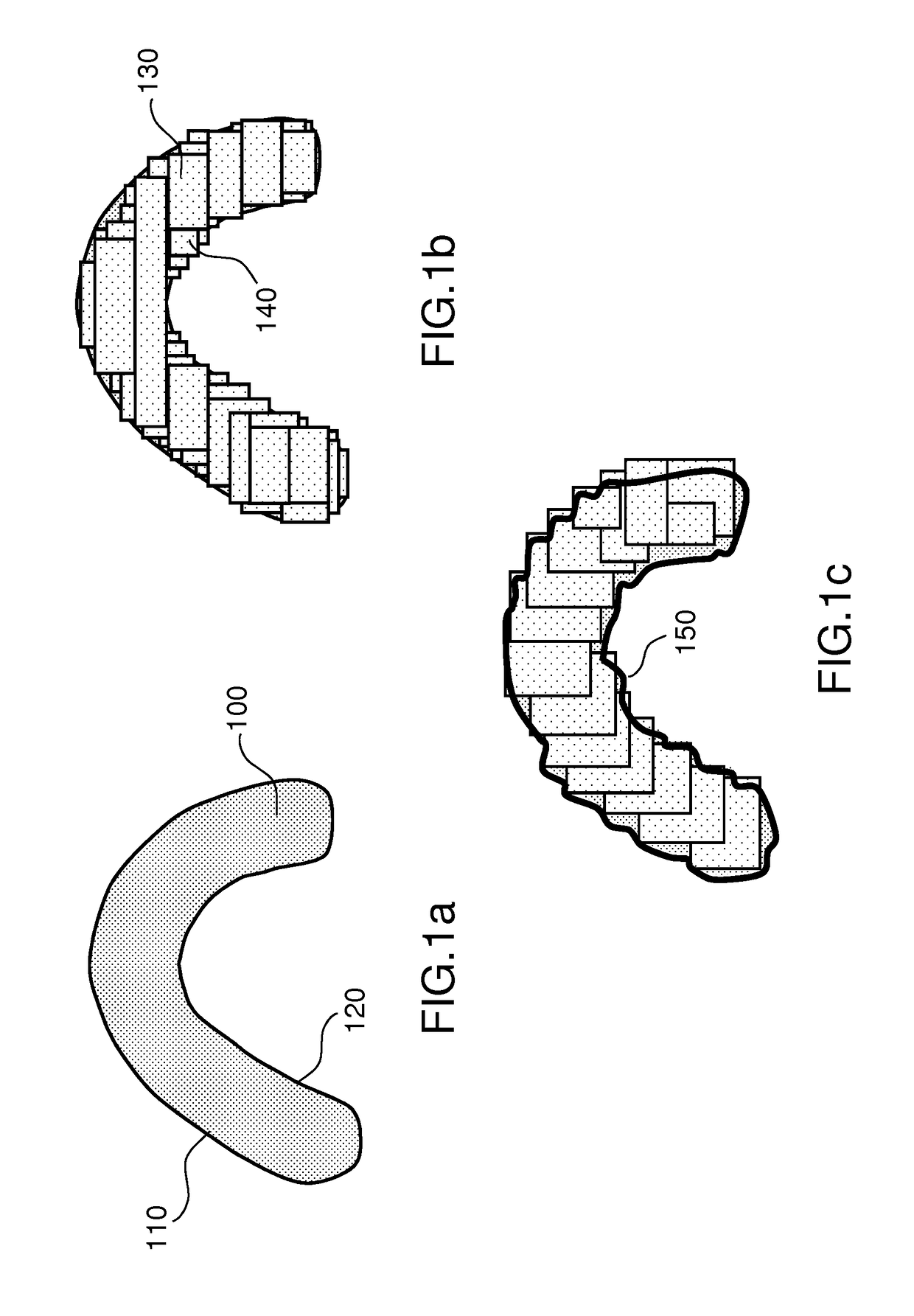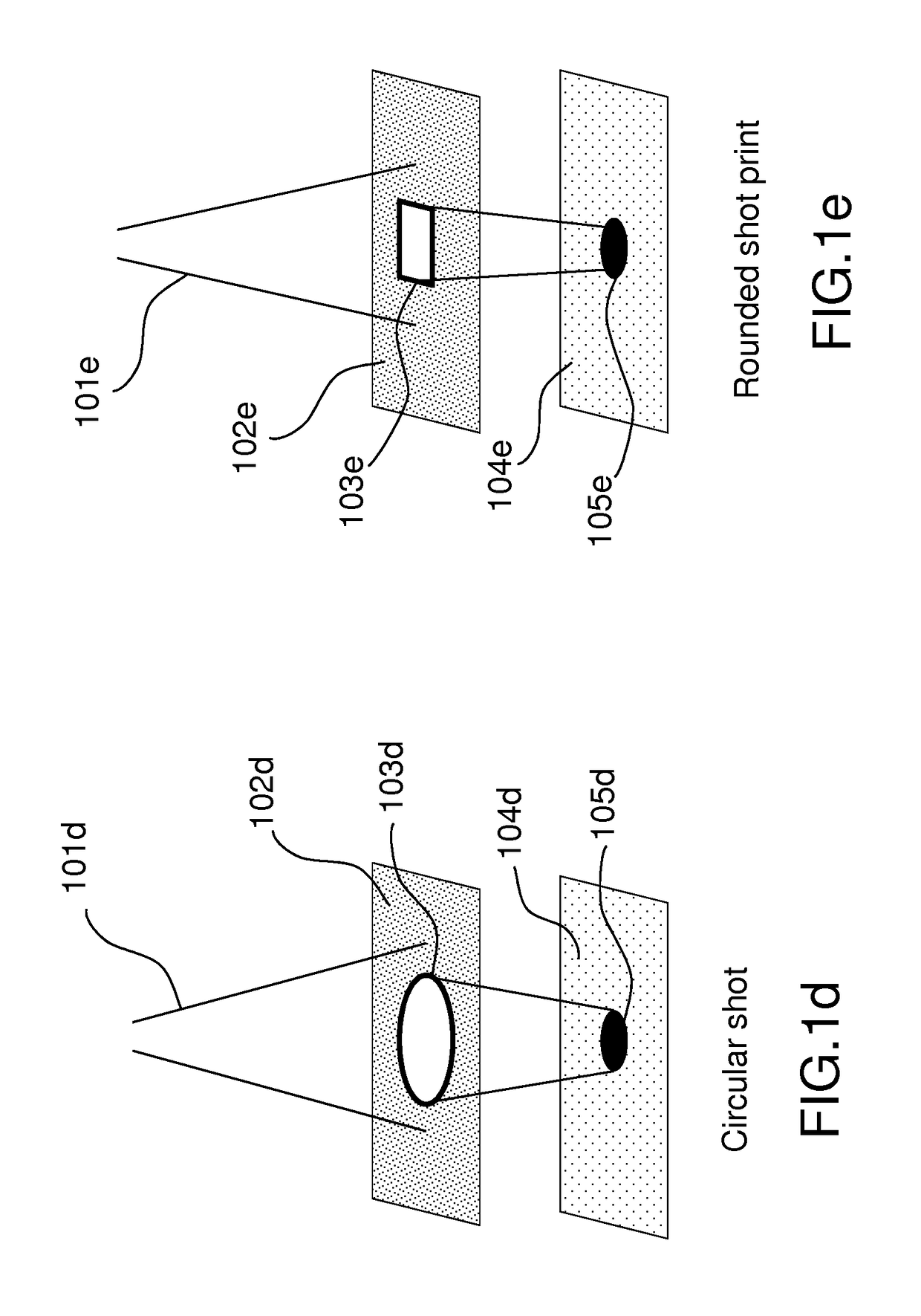Free form fracturing method for electronic or optical lithography using resist threshold control
a free-form fracturing and threshold control technology, applied in the field of electronic or optical lithography of masks, can solve the problems of increasing the cost of masks or wafers, increasing the cost of production, and reducing so as to minimize the roughness of the free-form contour, reduce the number of shots, and improve the robustness to the fluctuations of the process
- Summary
- Abstract
- Description
- Claims
- Application Information
AI Technical Summary
Benefits of technology
Problems solved by technology
Method used
Image
Examples
Embodiment Construction
[0041]FIGS. 1a, 1b and 1c illustrate a method of the prior art to fracture a free form target design.
[0042]A curvilinear form 100, having brims 110, 120 can be insulated using a series of shots 130, 140, which can be deemed at the dimensions which are discussed in the framework of this invention (for instance a critical dimension or CD in the region of around 60-80 nm) to create a circular imprint (see below). Typically, the form 100 and the largest shots 130 will have a width of around 200 nm. If the shots do not overlap, like on FIG. 1b, the brims of the curvilinear form will have significant roughness at the loci in between two successive, tangential, shots. Allowing two successive shots to overlap, like on FIG. 1c, will alleviate a bit the problem, as can be seen in the areas of the curvilinear form where the curve radius is infinite. But where the curve radius is small, like at loci 150, the overlap will procure an excessive dose and the brim will be uneven, which will affect t...
PUM
| Property | Measurement | Unit |
|---|---|---|
| width | aaaaa | aaaaa |
| diameter | aaaaa | aaaaa |
| diameter | aaaaa | aaaaa |
Abstract
Description
Claims
Application Information
 Login to View More
Login to View More - R&D
- Intellectual Property
- Life Sciences
- Materials
- Tech Scout
- Unparalleled Data Quality
- Higher Quality Content
- 60% Fewer Hallucinations
Browse by: Latest US Patents, China's latest patents, Technical Efficacy Thesaurus, Application Domain, Technology Topic, Popular Technical Reports.
© 2025 PatSnap. All rights reserved.Legal|Privacy policy|Modern Slavery Act Transparency Statement|Sitemap|About US| Contact US: help@patsnap.com



